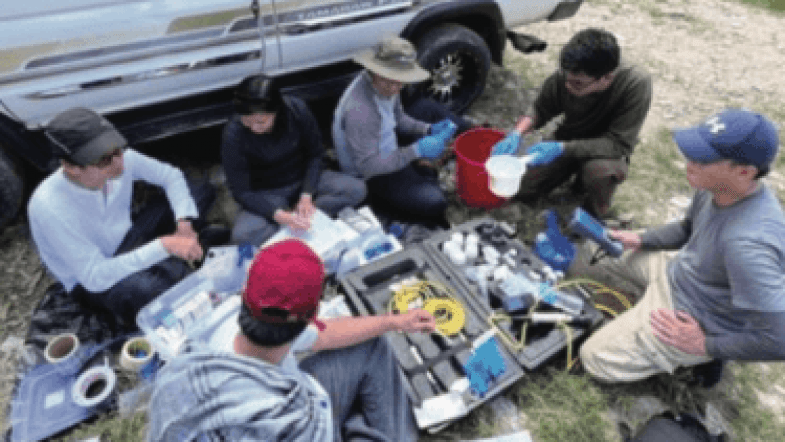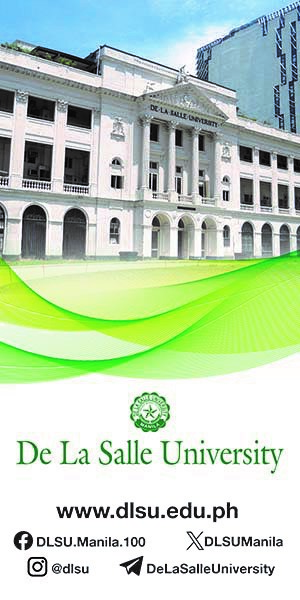
Faculty members from the Department of Chemical Engineering collaborate on a research project that seeks an alternative solution to protect water bodies from acid mine drainage.
Mining and mineral processing are essential industries in the Philippines and other parts of the world. However, these industries are being challenged by the impacts of wastes generated during and after mining and processing operations.
To help address this concern, a group of faculty and students from the DLSU Department of Chemical Engineering conducted a research project on acid mine drainage (AMD), which is one of the wastes that needs to be managed properly for these industries to thrive sustainably while protecting the environment. AMD is characterized by low pH and high concentrations of hazardous elements, and has been considered as the most widespread, serious, and costly environmental problem associated with mining and mineral processing operations.
The DLSU group was composed of project lead Dr. Aileen Orbecido, with faculty members Dr. Arnel Beltran, Dr. Michael Promentilla, and Dr. Joseph Ortenero; and research assistants Engr. Casey Oliver Turingan, Engr. Regina Damalerio, Joshua Pocaan, Engr. Christian Jay Balboa, and Engr. Cyrielle Lorio. The team worked in partnership with Curtin University, Australia, the National Research Council of the Philippines, and Carmen Copper Corporation.
Orbecido cites a report (Igarashi et al, 2020) that in the United States alone, there are over 500,000 small to midsize abandoned hard rock mines and over 13,000 abandoned coal mines, the majority of which are generating AMD that is costing the US government at least US$1M/day for treatment—a fair warning for the local sectors, she points out.
“In the Philippines, AMD must be treated before going downstream as it can contaminate the water, soil, and life, otherwise the health and environment of the communities, animals, plants, and the environment can cease to exist,” she emphasizes.
Because of the serious negative environmental impacts of AMD, she shares that researchers have continued to explore promising prevention and remediation solutions. Active and passive remediation methods—which both work by raising the pH of AMD to precipitate dissolved contaminants—are currently considered the most practical options for treating AMD.
“Passive treatment is seen to be a sustainable approach for legacy or abandoned mines in the Philippines. Our research group has explored single- or successive- process trains of alkaline drain and/or permeable reactive barrier (PRB) using locally available materials namely, limestone, laterite mine wastes, concrete waste, and fly ash for the treatment of AMD,” she explains.
According to Orbecido, these materials are locally abundant and cost effective. They also have either neutralizing capability and/or adsorption capacity that could increase the pH and remove heavy metals in the AMD.
With the completion of their project last year and in support of an integrated approach for the sustainable management of acid mine drainage, other projects in the same direction are currently being undertaken by DLSU’s Chemical Engineering faculty. Among these are two projects—Project 1 entitled “A novel technique for the recovery of valuable metals from AMD through bimetallic materials”, with research lead Dr. Vannie Joy Resabal of Mindanao State University – Iligan Institute of Technology; and Project 2, “A two-step neutralization ferrite process as active remediation technique for environmental treatment of AMD”, with Orbecido leading the research team. Another ongoing project is “Biodiversity positive mining for the net zero challenge (Bio+Mine)”, with project leaders Dr. Richard Herrington of Natural History Museum in the United Kingdom and Dr. Arnel Beltran of DLSU.
“The results of our studies will help the government and other stakeholders in crafting policies and initiatives that will help protect our water resources as well as all living things that are dependent on them,” she says.
Contact: Dr. Aileen Orbecido | aileen.orbecido@dlsu.edu.ph













